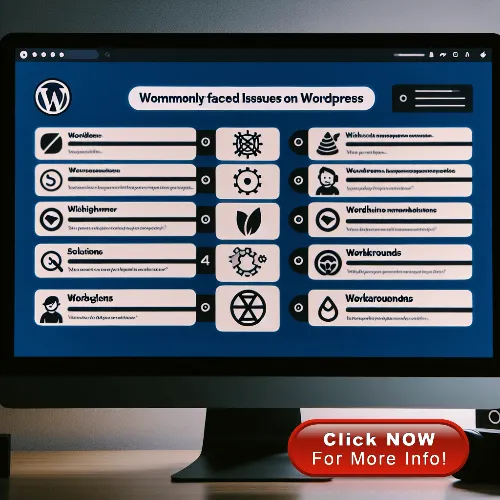TS Common Issues with WishList Member
In the dynamic landscape of online membership sites, WishList Member has emerged as a powerful tool for WordPress users seeking to create and manage subscription-based content.
However, like any robust platform, it can present challenges that may hinder its optimal performance and user experience.
Whether you are a seasoned developer or a novice site owner, encountering issues with WishList Member can be frustrating and time-consuming.
This article aims to address some of the most common problems users face when integrating WishList Member into their WordPress sites, from installation glitches and membership configuration errors to payment processing discrepancies and access control issues.
By offering clear, actionable TS Common Issues with WishList Member on WordPress with tips and best practices, we hope to empower users to swiftly resolve these challenges, ensuring that their membership sites operate smoothly and efficiently.
Whether you are looking to streamline user registration, improve content protection, or enhance the overall functionality of your site, this comprehensive guide will provide valuable insights and solutions tailored to elevate your experience with WishList Member on WordPress.
Join us as we delve into the intricacies of troubleshooting, enabling you to harness the full potential of this versatile membership plugin.
Table of Contents TS Common Issues with WishList Member on WordPress
Verify plugin compatibility with WordPress versions
Ensuring that a plugin is compatible with the current version of WordPress is essential for maintaining the integrity and functionality of a website.
Incompatibilities can lead to a range of issues, from minor glitches to complete site outages.
To verify compatibility, users should check the plugin’s page in the WordPress Plugin Directory, where it typically lists the tested version range.
Additionally, reading through the plugin’s changelog and user reviews can provide insights into how recent updates may affect functionality with the latest WordPress release.
It is also advisable to maintain a backup of the site before updating WordPress or installing new plugins.
This precaution allows for a quick restoration in case any compatibility issues arise.
Regularly updating plugins, alongside WordPress itself, ensures that users benefit from the latest features and security enhancements while minimizing potential conflicts that could disrupt site operations.
Clear browser cache before troubleshooting issues
Prior to addressing any issues, it’s essential to clear the browser cache, as this can significantly impact the troubleshooting process.
Cached data can cause outdated or corrupted files to be loaded, which may lead to misinterpretations of how a website is functioning.
By refreshing the cache, users can ensure that they are viewing the most current version of the website, allowing for a more accurate assessment and resolution of any existing problems.
Failing to clear the cache could result in confusion, as the displayed errors might not accurately reflect the site’s operational state.
This step is vital not only for identifying issues but also for verifying whether solutions implemented have been effective.
Taking the time to clear the cache can streamline the troubleshooting process, ultimately saving time and reducing frustration.
Check membership levels for proper access
Ensuring that membership levels are correctly configured is crucial for maintaining appropriate access to content.
Each membership tier should correspond to specific permissions that allow members to view or interact with designated resources.
If users encounter access issues, it is imperative to verify that their assigned membership levels align with the intended access rights.
This involves checking both the membership settings within the WishList Member system and the individual user profiles to confirm that the correct level has been assigned.
Misconfigurations can lead to unauthorized access or denial of access to paid content, resulting in potential dissatisfaction among members.
Regular audits of membership levels not only help in preventing these issues but also assist in identifying any discrepancies that may arise due to recent updates or changes in membership structures.
By maintaining a clear overview of access rights, administrators can ensure a seamless experience for all users while safeguarding the integrity of protected content.
Review payment settings for accuracy
Accurate payment settings are vital for the seamless operation of any membership site, as they directly influence billing, renewals, and overall user experience.
It is essential to verify that payment gateways are properly integrated and that all pricing plans reflect the intended amounts.
Discrepancies in pricing, such as incorrect fees or expired promotional codes, can lead to customer frustration and loss of revenue.
Regularly reviewing the payment settings ensures that your site remains compliant with financial regulations and that members are charged according to the established terms.
Additionally, confirming that payment processing settings align with your business model enhances the efficiency of transaction handling.
This includes ensuring that currency settings are correctly configured, payment cycles are properly scheduled, and any relevant taxes or fees are applied accurately.
By routinely checking these parameters, administrators can prevent payment-related issues that may disrupt service continuity and negatively impact member satisfaction.
Taking the time to audit payment settings fosters a trustworthy environment, encouraging member retention and supporting the long-term success of the platform.
Ensure correct configuration of email notifications
Proper email notification configuration is crucial for maintaining effective communication with members and enhancing their overall experience on the site.
Notifications serve as vital touchpoints, informing users of important actions such as membership approvals, payment confirmations, and account updates.
Ensuring that these emails are correctly set up involves verifying the sender’s email address, crafting clear and concise messaging, and confirming that all necessary triggers are in place to automate these communications.
Moreover, it is important to test the email delivery system to avoid issues such as messages being marked as spam or not being delivered at all.
Regularly monitoring email logs can help identify potential disruptions and ensure that members receive timely information.
By prioritizing the correct configuration of email notifications, administrators can foster trust and engagement within the membership community, ultimately contributing to higher retention rates and user satisfaction.
Test website performance to identify conflicts
Evaluating website performance is essential for pinpointing conflicts that may arise from various plugins, themes, or server configurations.
A systematic approach involves utilizing performance testing tools to assess loading times, server response, and overall user experience.
By analyzing metrics such as page speed and resource utilization, administrators can uncover bottlenecks that could lead to site instability or user frustration.
Identifying these conflicts not only improves site efficiency but also enhances the experience for members accessing content.
Regular performance assessments enable the early detection of potential issues, allowing for timely interventions that keep the website running smoothly.
This proactive strategy not only supports member satisfaction but also aids in maintaining the integrity and reliability of the platform as a whole.
Disable conflicting plugins to isolate issues
In the process of addressing issues within a WordPress site, it becomes crucial to identify and disable any plugins that may conflict with one another.
This method allows administrators to systematically isolate and diagnose problems, as many plugins may compete for the same resources or functionalities, leading to unexpected behavior or site failures.
By selectively deactivating plugins, one can observe changes in site performance and functionality, which can indicate the source of the conflict.
This approach not only helps in resolving immediate concerns but also contributes to a more streamlined and efficient website in the long term.
Once problematic plugins are identified, administrators can either seek alternatives or reach out to developers for support, thereby ensuring that the overall integrity and performance of the site remain intact.
Regularly reviewing and managing plugins can significantly enhance user experience and reduce the likelihood of conflicts arising in the future.
Update WishList Member to latest version
Maintaining the latest version of WishList Member is essential for ensuring optimal performance and security of your WordPress site.
Updates often include critical patches that address known vulnerabilities, enhance existing features, and introduce new functionalities that improve user experience.
By regularly checking for updates, administrators can take advantage of these improvements, ensuring that their membership site operates smoothly and remains competitive in an evolving digital landscape.
In addition to security benefits, updating the plugin can resolve compatibility issues with other plugins and themes, which may arise as WordPress itself receives updates.
Staying current with the latest version minimizes the risk of experiencing bugs or outdated functionalities that could hinder site performance.
Therefore, establishing a routine update schedule not only protects the integrity of the membership system but also fosters a reliable and engaging experience for users.
Consult documentation for common problems
When encountering issues with WishList Member, reference the available documentation to identify solutions for common problems that users frequently face.
Comprehensive guides and FAQs are often included, providing step-by-step instructions to resolve specific challenges.
This resource is invaluable for troubleshooting, as it consolidates collective knowledge and experiences from both the development team and the user community, ensuring that you have access to tried-and-tested solutions.
Utilizing the documentation can save time and reduce frustration, allowing administrators to address issues swiftly and effectively.
It’s recommended to familiarize yourself with this resource not only for immediate concerns but also to preempt potential challenges.
By understanding common pitfalls and their remedies, you can enhance the functionality of your membership site and improve overall user satisfaction.
Seek support from the WishList community
Engaging with the broader community around WishList Member can provide an additional layer of support when tackling challenges.
Community forums and user groups often serve as rich repositories of knowledge, where members share their experiences, solutions, and best practices.
By participating in these discussions, you can gain insights that may not be covered in official documentation, including tips on custom configurations, plugin compatibility, and effective troubleshooting techniques.
Connecting with fellow users can also foster collaborative problem-solving, allowing you to tap into a diverse range of expertise and perspectives.
Whether you have a specific question or are seeking general advice, the community can be a valuable ally in enhancing your understanding of the platform and maximizing its potential for your membership site.
In conclusion, effectively troubleshooting common issues with WishList Member on WordPress is essential for maintaining a seamless user experience and ensuring the successful management of your membership site.
By systematically addressing configuration settings, plugin conflicts, and user access problems, you can mitigate potential disruptions and enhance the overall functionality of your site.
Staying informed about updates and utilizing the resources available within the WishList Member community will further empower you to navigate challenges with confidence.
By applying these strategies, you can optimize your membership platform and provide your users with the reliable service they expect.








